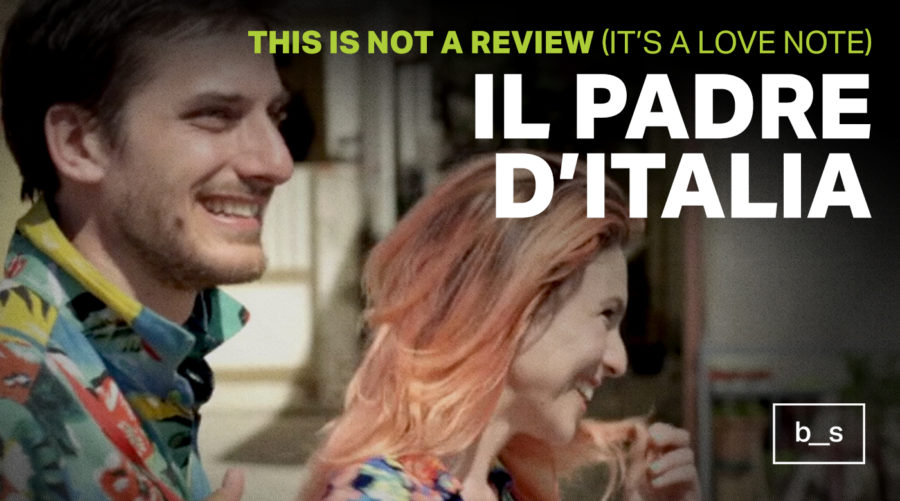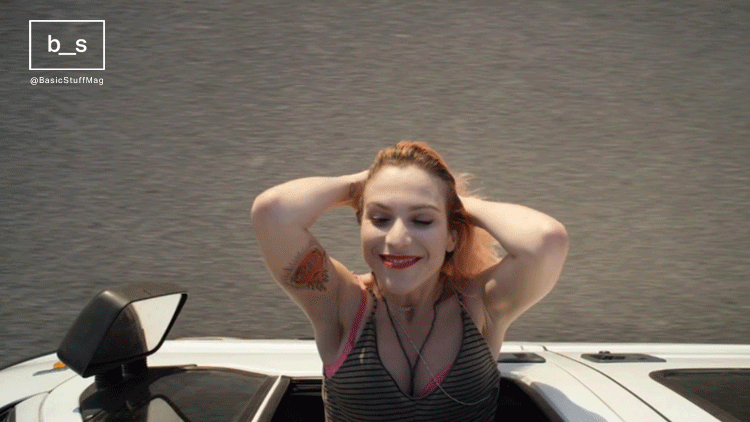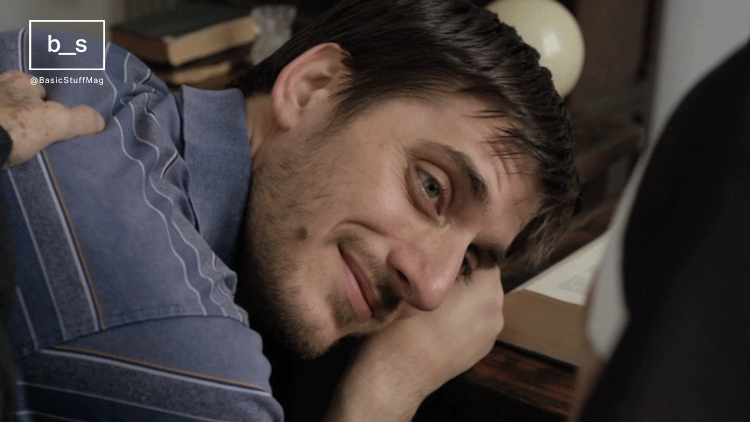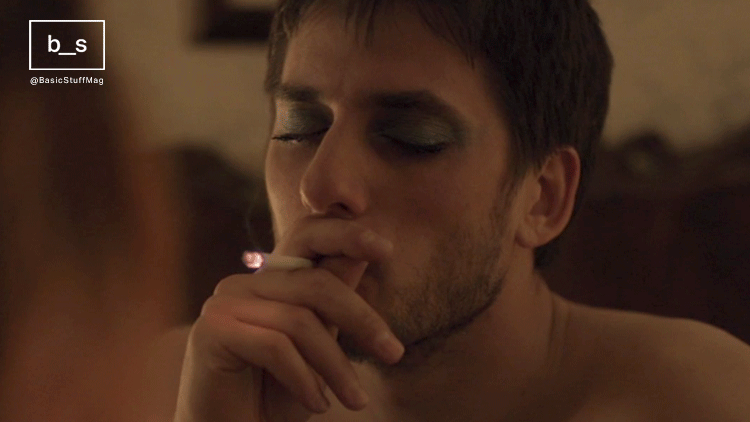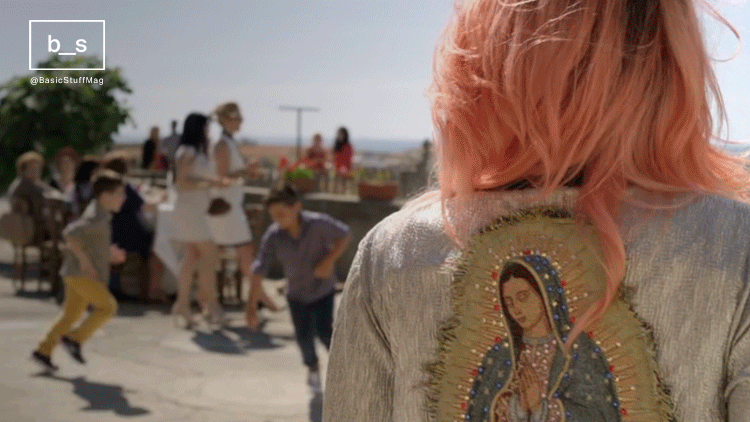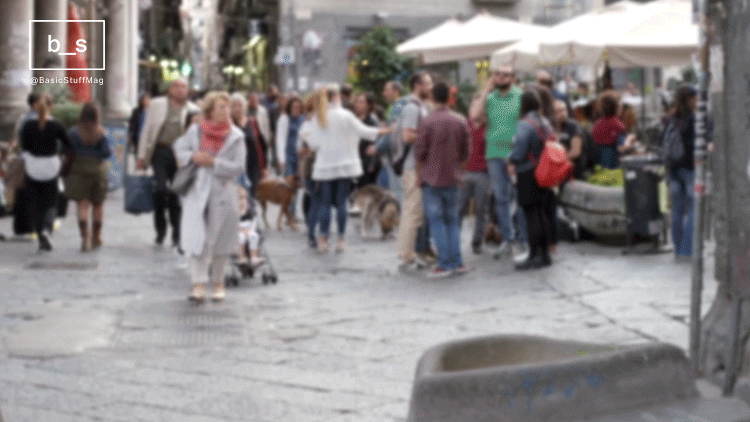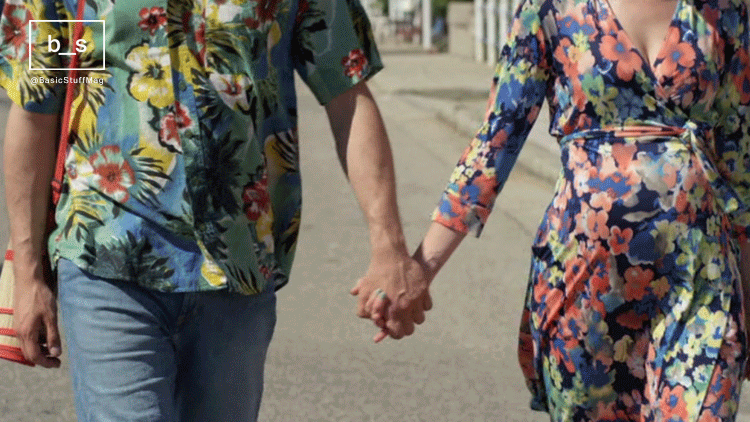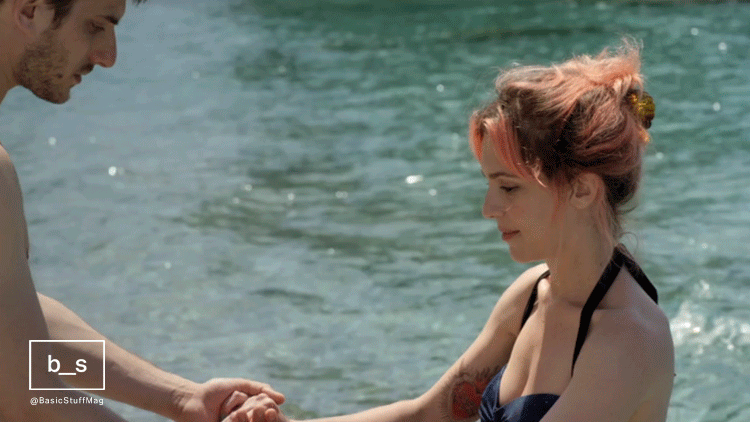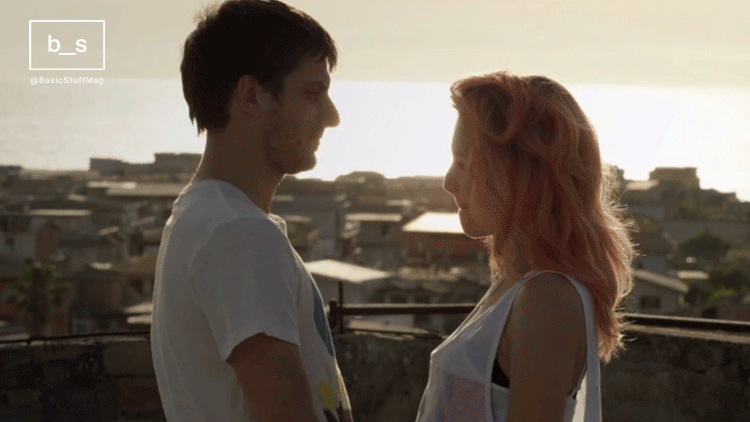A quick scroll through Twitter shows that we aren’t the only ones that have fallen head over heels for Luca Marinelli’s scene-stealing performance alongside Marwan Kenzari in The Old Guard and quite a few of us have gone in search of some of his other work which, turns out, is extensive. Our first dive was into 2017’s critically acclaimed Italian film Il Padre d’Italia (The Father of Italy / There is a Light) and we have been on an emotional spiral ever since. This movie has so much symbolism it belongs in a museum. This is not a review (it’s a love note).
NOTE: Spoilers below. We describe the movie enough to follow along if you haven’t been able to see it (and would like to just swoon over the pretty, moving pictures of beautiful people), but have intentionally left out some major plot details and the final climax.
Il Padre d’Italia is a story about Paolo and Mia — a heartbroken gay man and a wandering pregnant woman — two souls that are not so much lost as tormented by centuries of expectations about what a family should be. This movie packs a lot into its 92 minute runtime, but director Fabio Mollo (who also wrote the film, alongside Josella Porto) is also very gentle about the way he presents things like the space queer people hold in one of the last bastions of Catholicism, the difference between independence and loneliness, and the definition of a miracle. The soundtrack (which you can listen to here) is also an absolute celebration of this gorgeous storm of a story.
“How can you know right away, when something happens to you, if it is a good thing or a bad one?” // “Perche tu sai subito, quando ti succede una cosa, se è una cosa bella o brutta?”
At first glance, Mia (Isabella Ragonese) is a consummate wild child — she has pink hair, glittery clothes, and she is very pregnant. She is undoubtedly a vision, one that faints right into the arms of our other protagonist, Paolo (the aforementioned Luca Marinelli). It is lucky he is there to catch the swooning preggers Mia and get her to a hospital. As he tries to return her glittery jacket emblazoned with the image of La Virgen de Guadalupe (we will be coming back to this jacket later, it is IMPORTANT), he finds that she has already checked herself out and almost magnetically follows after her.
It’s soon evident that Mia doesn’t have any stability in her life at the moment, not even a place to lay her head and Paolo — much to his own surprise — immediately signs on to give her a place to rest and a ride wherever she needs to go. It turns out that where she needs to go is all over Italy, chasing down false leads about the father of her child. There is also time for an emotional pit stop at the loving but lonely orphanage where Paolo grew up, and a visit to Mia’s childhood home — a place that offers both the safety of family and their suffocating disappointment.
This movie uses small, subtle emotional brush strokes and some blatant Catholic imagery to tell an inherently queer story about the ways gender roles and family constructs can be both liberating and a prison. Paolo, in particular, struggles with his guilt over his (deeply suppressed) desire for a family. As a gay man and an orphan, is this something he’s even allowed to want? For Mia, it’s about the expectations of her loving but disapproving family who have all but given up on her. From its title to its road trip scenery, this film is of and for its country, but the story it tells is for everyone who remains gentle hearted in the face of loneliness.
“… and every miracle, by definition, is against nature.” // “… e ogni miracolo, per definizione, è contro natura.”
The quiet, but momentous, thesis of this story is this — miracles (like Jesus’ virgin birth) are by definition, unnatural. The movie defies the dichotomy of the natural and unnatural representing a positive and a negative at every turn. If something is natural it can be good and common but if it is miraculous then it is rare and special. Certainly then, things seen as “unnatural” by some — like queerness or unconstrained femininity — must also then be accepted as miracles in their own right.
This is reflected in words and details, most curiously in the design of Mia’s character; from her unnatural hair color, the tattoo of the Sacred Heart on her arm, and her mysterious pregnancy to her sparkly silver jacket with a bedazzled image of La Virgen de Guadalupe on her back. Now, La Guadalupana is not an Italian Catholic icon, She’s a Mexican one…so what gives? Unlike many of her European-featured counterparts, the dark skinned Virgen de Guadalupe is venerated with special fervor by the poor and those who are relegated by society. A gay man and a single home-insecure mother traveling through one of the most Catholic countries in the world? Check.
In an effort to raise Mia’s spirits, the pair go on a Say Yes to the Dress “date” during which the two stage a spat about Paolo sleeping with her non-existent fiance. The two flee from the shop, Mia still clad in her pure white dress, and go on a soundtrack-filled run through the streets. Their adventure includes a blink-and-you’ll-miss-it Renaissance image of passersby offering roses to the pink haired pregnant girl in the wedding dress and Virgin Mary bedazzled jacket.
Paolo, on the other hand, is in his own way an avatar of St. Joseph, probably the most famous foster father. Paolo works at a prefabricated furniture store (think IKEA), but when Mia asks him what he had wanted to be when he grew up he reveals he wanted to be someone who built things that were special, bespoke, unique. A carpenter. It’s not exactly the Sacra Famiglia we’re used to seeing, but you know what? It’s beautiful.
However, this isn’t a story of perfectly paralleling the Catholic canon, it is a story about queering that narrative. When we first meet Paolo he is quite literally crying in the club, because his long-time partner has ended things for a perfectly reasonable reason — he was ready for a family and Paolo was not. In fact, in one of those tiny brush strokes of storytelling we see Paolo clumsily adding a third plate to a table perfectly set for two and taking a miserable smoke break in front of a truly gigantic billboard featuring the most cookie cutter family to ever grace advertisement — a wide smiled husband and wife with two equally grinning children.
Paolo is carrying this societal ideal of a heteronormative family that literally looms over him throughout the film. He feels the unrelenting pressure of homophobia in his country and society at large telling him that what he wants is unnatural, and that the price of having a place in the life of the child Mia is carrying comes at the cost of his identity. The deeply entrenched belief that fatherhood and family are reserved for heterosexual men haunts him almost as much as his parent-less childhood.
“I think you are afraid of knowing how to swim.” // “Secondo me hai paura di saper nuotare.”
In another somewhat biblical but mostly fun and lovely scene (visually reminiscent of John the Baptist in the river Jordan), Mia and Paolo wade into the shallow waters of the beach in Calabria and she begins teaching him how to swim. Paolo, who went through two unsuccessful adoptions and aged out of an orphanage, likely never had anyone to teach him how to swim as a child and they share a sweet lesson until fear overcomes him and he walks away back to the shore. As Mia calls out after him, what is stopping him is not in itself the fear of swimming but rather the fear of knowing how to swim. It seems a bit of an odd way of putting it, but in a similar way Paolo is not afraid of the commitment and responsibility of being a father, he is afraid that it is simply not something he can have.
This story has no villains. Mia’s family is frustrated but understandably so and doesn’t turn her away when she comes back out of the blue pregnant and with a friend. Paolo’s ex, Mario, is actually a wonderfully supportive force in his life. For lack of a human villain, there also isn’t a single clear cut Bad Thing torturing both of our protagonists, not depression or addiction or social class even though all of these things linger naturally in the story.
So what do we have left? A story about two people struggling with social expectations, distinguishing between sexuality and intimacy, and the differences between the idea and the reality of family. As Mia and Paolo learn each other, they become catalysts in each other’s lives and, without spoiling the climax of the film, it is undeniable that they change one another in real and permanent ways.
We also wanted to take a moment to bemoan that spectacular films like this are not as accessible nor widely distributed as they definitely should be. So if our dear readers will permit us a little call to action: tweet your local Netflix, Amazon Prime, and Hulu and ask them with that fervor we know you have that this film, and other international stories like it, be made more widely available on their platforms (you can also fill out some request forms here and here). In the words of celebrated Korean director Bong Joon-Ho, “Once you overcome the one-inch-tall barrier of subtitles, you will be introduced to so many more amazing films.”

